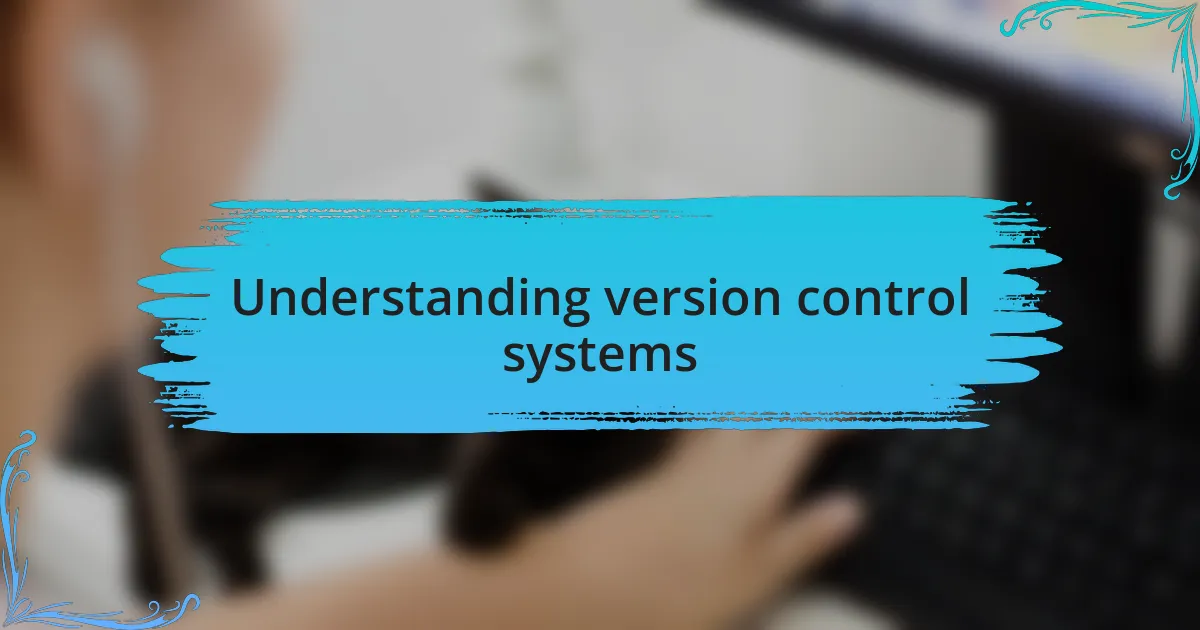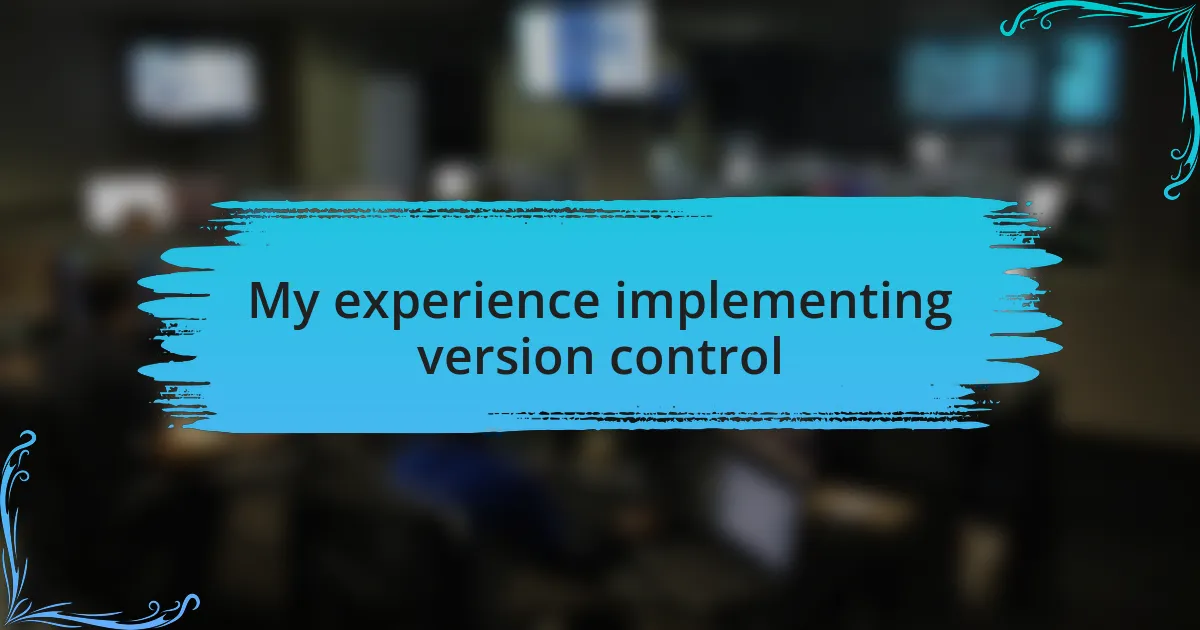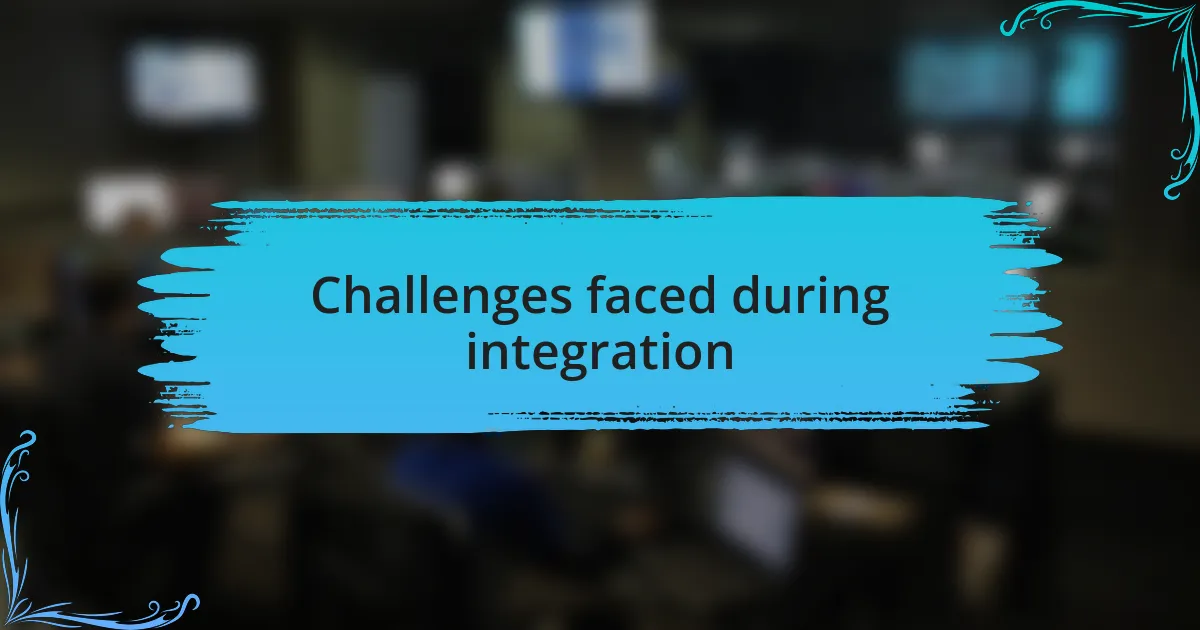Key takeaways:
- Version control systems, especially Git, enhance collaboration and reduce the anxiety associated with code management through features like branching and reverting changes.
- Initial hurdles in adopting Git included setup challenges, merge conflicts, and team resistance, which required clear communication and persistence to overcome.
- Establishing a consistent commit message style is crucial for maintaining clarity and efficiency within a team’s workflow.

Understanding version control systems
Version control systems (VCS) are essential for managing changes to code over time. I still remember the anxiety I felt when I lost hours of work due to a coding error that could have been easily resolved if I had been using a VCS. Imagine being able to rewind your project to a previous state with just a command—doesn’t that sound liberating?
As I began integrating Git into my projects, I quickly realized how critical it is for collaboration, particularly in team environments. It fosters a sense of teamwork where everyone can contribute without the fear of overwriting each other’s work. Have you ever faced the chaos of merging code from multiple contributors? A good VCS makes that process much smoother and more manageable.
Understanding the different types of version control, like centralized and distributed systems, greatly enhanced my development process. I was initially confused about which one to choose, but once I grasped how Git, a distributed system, allows multiple local repositories to work independently but still sync changes, everything clicked into place. This flexibility ultimately empowered me to experiment with new features without jeopardizing the stability of the main project.

My experience implementing version control
As I started implementing version control in my projects, the first challenge I faced was the initial setup of Git. I remember staring at my screen, feeling overwhelmed by the command line interface and wondering whether I had bitten off more than I could chew. But the moment I pushed my first commit, a wave of relief washed over me, and I felt a sense of accomplishment that spurred me on to learn more.
Once I understood how to branch effectively, I discovered a newfound confidence in experimenting with my projects. I often took a deep breath before creating a new branch, but with the safety net of being able to revert changes, I pushed the boundaries of my creativity. Who knew that tackling a complex feature would be so much less daunting when I could easily branch off the main codebase?
One of the most rewarding moments came when I collaborated with a friend on a project. We were working late into the night, and I remember the thrill as we managed to merge our changes seamlessly for the first time. It felt like we had cracked some secret code, enhancing my appreciation for how version control not only manages changes but strengthens collaboration. Isn’t it amazing how a simple tool can transform your development workflow and elevate teamwork?

Challenges faced during integration
One major hurdle for me was grappling with merge conflicts. I still remember the anxiety that bubbled up as I stared at the error messages, trying to comprehend why my changes seemed to clash with those of my collaborator. It felt unnerving at first, as if I was standing at a crossroads, unsure which direction to take. But I realized that resolving these conflicts not only required technical skill but also communication; discussing the differences opened my eyes to different perspectives.
Another significant challenge was convincing team members who were reluctant to adopt version control. It was disheartening to witness the initial skepticism from some teammates who preferred their old methods. I had to share my positive experiences and demonstrate tangible benefits, such as improved project organization and fewer lost files, to get them onboard. It took some persistence, but seeing their eventual acceptance reminded me how introducing change often requires patience and clear encouragement.
Lastly, keeping a consistent commit message style across the team proved to be tricky. I once encountered a scenario where commits ranged from vague entries like “fixed stuff” to overly detailed descriptions that seemed overwhelming. This inconsistency led to confusion and wasted time when trying to trace back through the project history. I learned that creating a simple guideline for commit messages fostered clarity and ultimately improved our workflow. Why is it that sometimes the smallest details can make the biggest difference in team productivity?